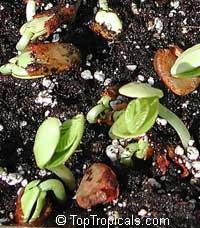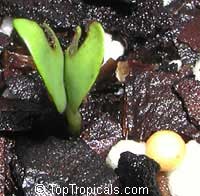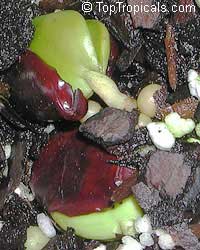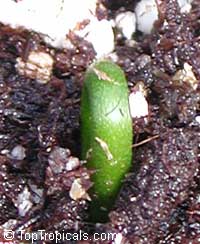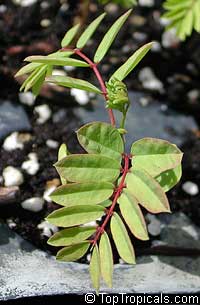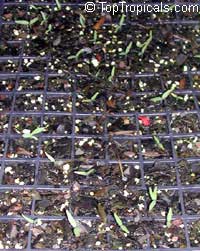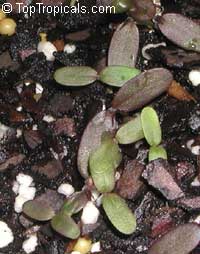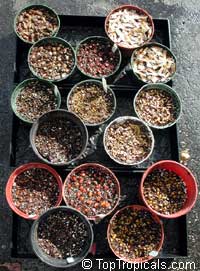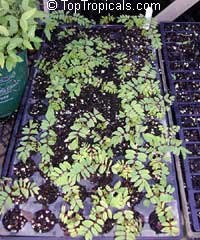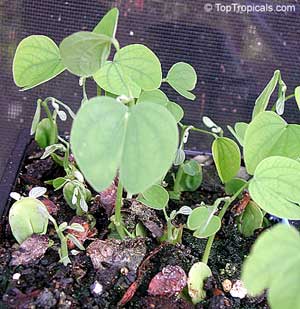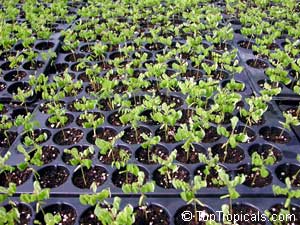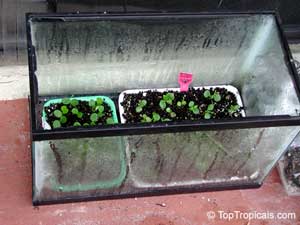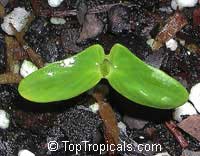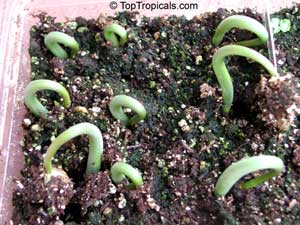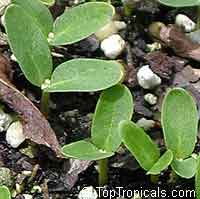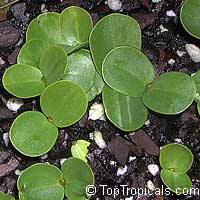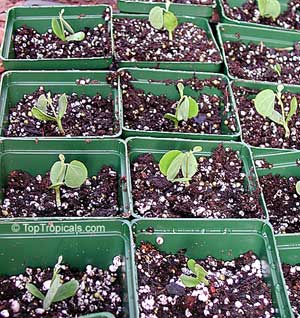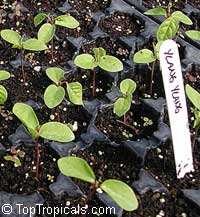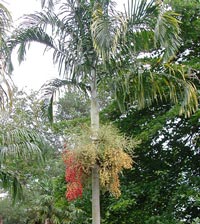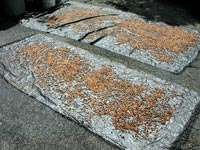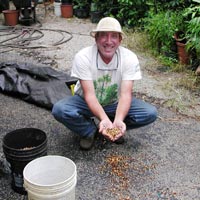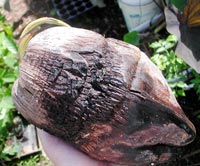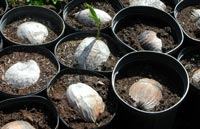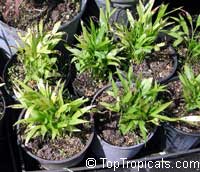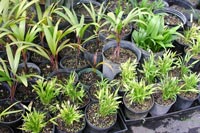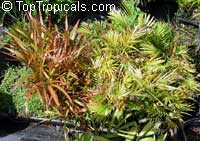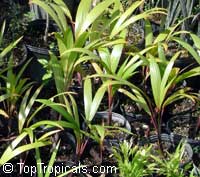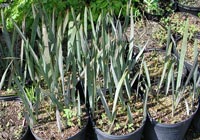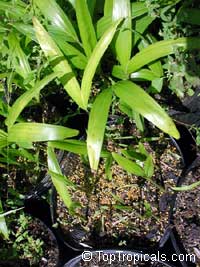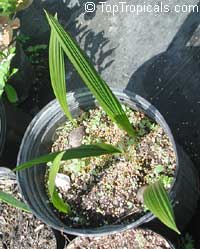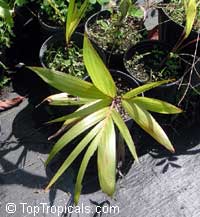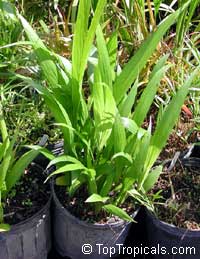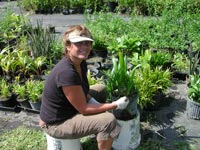Seeds of Tropical Plants
Seeds: general information || Germination instructions || Germination time || Order seeds
Download seed germination instructions (.PDF, 50Kb)
GENERAL INFO
GROWING PALMS FROM SEEDS
TROPICAL BULBS
1. GERMINATION
We recommend to use Cirkon and Epin natural hormones to improve seed germination!
A note about seed germination
Most species of seeds have hard casings to protect the seed "embryo".
For most of these "hard" seeds, the outer shell must be scarred,
scratched or softened in some way. Some species take up to a year to germinate
and will need help in the beginning to get the shell softened. Most varieties
of slow germinating seeds will turn black and rot if
there is not sufficient heat in the soil (75 to 90 degrees F for most species)
or if the soil dries out or is allowed to remain too wet, which will encourage
the growth of one or another of the varieties of fungus or mold. It is important
to speed up germination and to get the plants growing as soon as possible
in order to avoid potential problems.
Anyone who has soaked dried beans before cooking is familiar with the process
of softening up the shell. When the outer shell is softened it allows the
contents to expand. Potassium Nitrate (Saltpeter) can help in softening up
these outer shells. It is available in many drug stores. Soak the seeds in
a solution of one teaspoon of the saltpeter to
one quart of warm water for at least 24 hours. Do not allow the seeds to dry
out but sow them immediately using the remaining solution to water the soil
or other growing medium. Soak several species of seeds at once in smaller
containers of the same solution and have the containers of growing medium
or soil ready for planting as soon as the soaking period is complete.
|
Ripe seeds |
Growing a palm from seed is fairly easy. This is how all of the palm trees are grown, except for those that you can multiply by division. Growing a palm from seed is exiting but patience testing process. The sizes of palm seeds vary from gigantic (coconut) to size of a match head (Washingtonia palm). |
Important tips for successful palm growing
|
Freshness Palm seeds must be fresh. In tropical forest the seeds start growing almost immediately due to the humidity level. Desert palms can keep freshness for years. Washingtonia seeds can stay fresh for 10 years. Ripeness Palm seed is a fruit with a hard pit. Even if you can't see the flesh, it is always there. The color of the soft shell helps you to determine the ripeness of the seed. Mature seeds should be either red or brown-yellow, or black but not green. The seed is located in a pit. It is supposed to be hard and whitish color. If the core is soft and deforms easily then the seeds aren't mature yet.
|
Drying seeds after collecting - about 75 000 seeds here! |
|
Cleaning the fruit Outside soft shell, covering the pit, can contain a special component, which is getting in the way of growth (so the plant starts growing after the seed has been eaten by a bird or an animal, the shell is digested and the seed is carried away to a new location where it will grow). Most of the seeds are already cleaned and are ready for planting. But if there is still some dry skin on the seed, you should take it off before planting, otherwise the seed may rot. In order to take the skin off you should soak the seeds in water for 1-3 days, changing the water daily. When fruit skin is softened, scrub the skin of the seed with a knife. Don't worry about the pit -its outer shell is very hard and your actions won't hurt it a bit. |
Murray
Corman |
Growing from seeds
|
Cocos
nucufera |
After cleaning, seeds should be soaked for another 1-2 days, and don't forget to change water daily. There are two ways to grow palms from seeds. 1. Growing the seeds in a container. This method is commonly used by industrial growers. Use this method for big quantities. The container should be placed into a greenhouse. This method is good for observing. Advantages - easy to observe how the plant grows, vertical growth
of the plant, good air circulation, ability to add fertilizer. |
|
2. Growing in a bag. This method is better for a home growing. Place the seeds in a plastic bag with a moist peat moss (or even better coconut fiber), then place the bag in a warm place. The peat moss should be wet enough so you can squeeze just 2-3 drops of water. Don't overwater otherwise fungus may occur. Advantages - easier to maintain high humidity, inexpensive,
easy, saves space, the bag is movable. |
|
young seedlings look alike... |
Tropical palms need additional warmth for successful growing: so you need to maintain the temperature of about 86-95F. If you raise the temperature, you may "cook" the seeds, but lower temperature will make germination slow down if ever at all. You may use a heating pad to warm up the bag with seeds. Some seeds with hard shell should be scarificated. |
|
First sprouts If everything was done properly, the sprouts may come up in few weeks. To be exact, it depends on the size of the seed and growing conditions, the time may vary from 2 weeks to a month. Don't forget to mark the bag with a date when you plant the seeds and the type of seeds. |
|
Seedlings Finally the sprouts come up. If they are in a bag, you need to take
them out of the bag when they get about 1 inch. Try not to disturb the
root because it is still very fragile. Plant the seedling in a deep
pot, so that the seed is a little bit under soil level, but the upper
sprout stands upright. Of course the soil should be very well-drained.
|
|
Growing At first the seedlings grow fairly slow, but with time the growth will speed up. First your palm will get 2-3 simple grass-looking leaves, but later the specifically shaped leaves will appear. Use house plant fertilizer according to the instructions printed on the label. To prevent from fungus and rot, give the seedlings plenty of fresh air and enough sun, you may apply fungicide once in a while. |
|
|
Fabiana
is separating
|
Bulbs should be planted at a depth where the "neck" is just under the soil line. If you feel you live in an environment that might be borderline for plant hardiness, you can probably get away with placing the bulb at a depth that has the "neck" about 1" below the soil line. When planting bulbs in groups, place them about 2" apart. If your bulb has living roots, dig the hole so the roots may be spread out. Just like spring bulbs, these benefit from a handful of bone meal per one or two bulbs in the planting hole. Water in thoroughly. They prefer a well-drained soil and full sunlight. They are quite forgiving with soil quality. Because most of them bloom in response to cycles of water deprivation and surplus, they are excellent for inducing bloom in potted culture, too.
